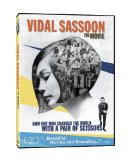| Reviews & Columns |
|
Reviews DVD TV on DVD Blu-ray 4K UHD International DVDs In Theaters Reviews by Studio Video Games Features Collector Series DVDs Easter Egg Database Interviews DVD Talk Radio Feature Articles Columns Anime Talk DVD Savant Horror DVDs The M.O.D. Squad Art House HD Talk Silent DVD
|
DVD Talk Forum |
|
|
| Resources |
|
DVD Price Search Customer Service #'s RCE Info Links |
|
Columns
|
|
|
Vidal Sassoon the Movie
Can a hairstylist change the world?
That's the main question posed by Vidal Sassoon: The Movie, a comprehensive documentary on a man that some may know as the creator of the most hard-edged hairstyles known to womankind, an innovator of '60s Mod aesthetics, or that "If You Don't Look Good, We Don't Look Good" shampoo commercial guy. Director Craig Teper opens the film with shots of a beaming (and terrifically fit) Sassoon walking along in beatific slo-mo while various voiceovers proclaim the man's monumental greatness. Somewhat over-the-top, perhaps -- but by the time the film ended, this viewer was inclined to agree with all that praise. In Sassoon's case, a hairstylist truly can change the world.
Vidal Sassoon: The Movie is bookended with footage of the 81 year-old Sassoon examining the mockup designs for a coffee table book about his life and career. It's a striking image (especially as filmed in sharply defined black and white), but we find out almost immediately it doesn't quite jibe with the pragmatic, unsentimental Sassoon that emerges. The film mostly focuses on Sassoon in the here and now, tanned and healthy, brimming with the kind of "I'll try anything" enthusiasm that only the most creative people inspire.
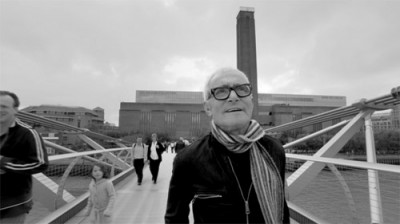
Probably the most illuminating section of the film comes when Sassoon discusses his pre-hairstyling life. He grew up poor and Jewish in London, the son of a single mother whose husband left the family when Vidal was a toddler. He and a brother were placed in an orphanage soon thereafter. The experience molded him into a teen activist. He soon became one of the youngest members of the 43 Group, an organization that violently fought to keep anti-semitism out of England shortly after the war. As a young man, he journeyed to Israel to fight in the 1948 Arab-Israel war. It was there that he had an epiphany that he had to do something extraordinary with his life, which led to putting down the gun and picking up a pair of shears.
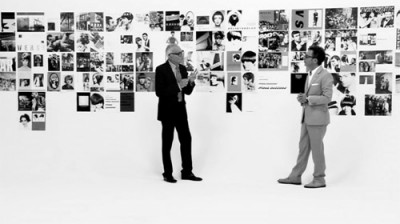
The film kicks into high gear when Sassoon enters the styling field, apprenticing under a flamboyant hairdresser known as Raymond. Although Sassoon has nothing but glowing memories of the man (who is seen in a film clip describing his own periwinkle blue suit in fantastic detail), Raymond's work epitomized the stylistic rut that hair fashion was stuck in during the '50s. In architecture, industrial design, and fashion, modernism and sleek lines were the rule -- yet womens' hair was still being pouffed, teased and waved as if it were frosting on a cake. Sassoon's concept was to take the natural growth of hair on the scalp and trim with clean lines that mirrored the Bauhaus and Industrial Style architecture he admired. The simple "bob" that emerged wasn't a new concept (silent film star Louise Brooks wore one), but Sassoon's hassle-free spin on it was perfectly timed for the relaxed '60s.
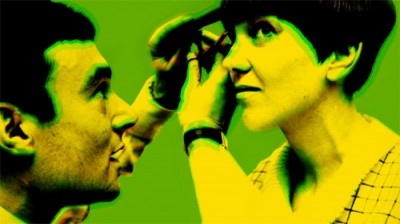
Moving into the heady sixties finds Sassoon opening his own London-based salon (used as a chic locale in Roman Polanski's Repulsion), which becomes such a hit that he opens another one in New York City. In a film that has been judicious with vintage clips, this segment explodes in a jazzy montage of London in the '60s, nexus of the "Modern World" that Sassoon helped to create. The film then goes into perhaps its coolest moment, a casual sit-down with Sassoon and fashion icon Mary Quant, creator of the miniskirt and every bit as much of a '60s innovator as Sassoon. The two have a casual rapport and seem somewhat in awe of what they accomplished in a relatively brief timeframe, some 40 years earlier. It's an amazing segment.
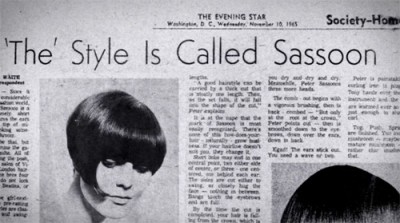
Sassoon's most famous styles get a good treatment here, whether it was the graceful bob made for actress Nancy Kwan (seen on the DVD package) or the daringly short locks styled for Mia Farrow in Rosemary's Baby (the media circus that surrounded this event is recalled by Sassoon in wry detail). But his innovations as a business person get as much screen time -- he started the concept of a salon as team effort, and was one of the earliest people to "brand" himself with an identifiable style that extended from the glam, glass-encased sleekness of his salons to the packaging of his own hair care product line (remember those brown cylindrical shampoo bottles?). As the film moves into the '70s, we find that the branding concept even got extended to Sassoon's own personal life, with he and second wife Beverly modeling themselves as the healthy, glamorous embodiment of that decade. We later find out that their casual 'n happy celebrity persona is something of a façade (expressed with a clip of Beverly looking uncomfortable on that very '70s game show, Tattletales) and they eventually divorced, but Vidal's commitment to his own family is something to be admired.
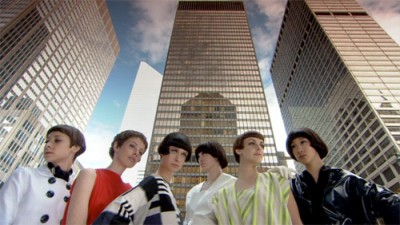
Even with the launch of the product line that bears his name in the '80s, the film takes something of a breather in its final third. We see Sassoon engaging in yoga, swimming, and kicking around on a soccer field. The montages fade away and we see a man at peace with himself. The only time he seems vulnerable is when he describes hearing about the overdose death of his daughter. The later years are less eventful (even somewhat draggy), but it's the simplicity of the film that really drives home Sassoon's essence. Unlike recent fashion docs such as The September Issue or Valentino: The Last Emperor, Vidal Sassoon: The Movie doesn't dwell on the intersection of style and business or how competitive it can get. The film focuses on one guy who made his mark in a rather brilliant way.
The DVD
Video:
This visually resplendent film is given a luxe treatment with the anamorphic widescreen 16x9 image on the DVD. The image is crisp and free of artifacts, flawed only in sections that use archival material stored on decades-old film and videocassettes (although, listening to the commentary, it's a miracle that they got any of that stuff).
Sound: Phase 4 Films' DVD of Vidal Sassoon: The Movie sports two English soundtracks, in 5.1 Dolby Surround and 2.0 Digital Stereo. The dialogue and music is nicely balanced throughout, even if the surround effects might be so subtly done it's subliminal. No subtitle options are included. Extras: Topping the extras menu are 28 minutes of deleted scenes, culled from interviews with Sassoon's friends and colleagues. While interesting enough on their own, the gushiness of the interviewees would have been too much in the film (they work much better as a DVD extra). The 25-minute Vidal the Music featurette is a totally fascinating look at the soundtrack selection with Craig Teper and music supervisor David Spelman. For the project, the two consulted with a handful of indie rock bands influenced by Philip Glass and other minimalist composers -- resulting in an original score that works surprisingly well. An audio commentary with Teper and executive producer Michael Gordon reveals a lot of interesting bits about the making of the film, the logistics of interviewing people and researching the subject. The two don't make it a non-stop chat fest, but it's very good and their enthusiasm never lags. A trailer and three minute photo gallery round out the extras. Final Thoughts: When a documentary focuses so heavily on a single living person, that person better live up to expectations. Watching Vidal Sassoon: The Movie is like gearing up for ninety minutes with a stylish and erudite old friend, then finding out that what you already knew of that friend was only a fraction of who the person really is. Highly recommended.
Matt Hinrichs is a designer, artist, film critic and jack-of-all-trades in Phoenix, Arizona. Since 2000, he has been blogging at Scrubbles.net. 4 Color Cowboy is his repository of Western-kitsch imagery, while other films he's experienced are logged at Letterboxd. He also welcomes friends on Twitter @4colorcowboy.
|
| Popular Reviews |
| Sponsored Links |
|
|
| Sponsored Links |
|
|
| Release List | Reviews | Shop | Newsletter | Forum | DVD Giveaways | Blu-Ray | Advertise |
|
Copyright 2024 DVDTalk.com All Rights Reserved. Legal Info, Privacy Policy, Terms of Use,
Manage Preferences,
Your Privacy Choices | |||||||









